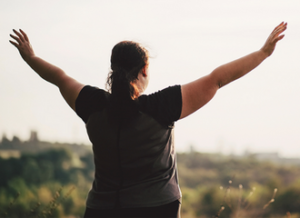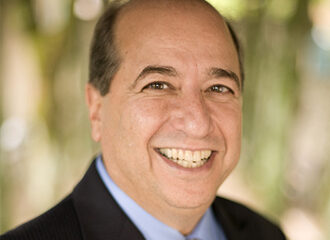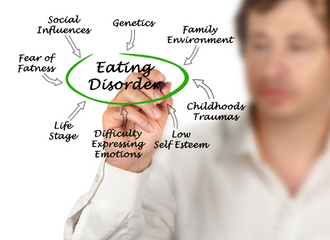Research suggests that there is a strong association between negative body image, eating disorders, and disordered eating. Improving body image is a crucial goal in the course of treatment and an essential factor in the full recovery from an eating disorder. For most individuals in today’s culture, achieving the “perfect” body has become the dominant measure of self-worth.
This unhealthy preoccupation with physical appearance and self-image is reflected in body image statistics like these from the National Eating Disorders Association:
- 4 out of every 5 10-year-olds are afraid of being fat
- 80% of American women are dissatisfied with their appearance
- The average American woman is 5’4” and weighs 140 pounds
- Her “ideal,” the average American model, is 5’11” and weighs 117
- 35% of “normal” dieters progress to pathological dieting
- 20-25% of pathological dieters develop partial or full syndrome eating disorders
- Americans spend over $40 billion on dieting and diet-related products each year
Society’s Influence on How We See Our Bodies

No one is immune to the ever-changing cultural beauty standards and the pressures to be thin. Many people believe that their lives will be magically transformed when their goal weight is reached. This keeps individuals of all ages caught up in the relentless pursuit of thinness—a quest that all too often results in body shame, body loathing, low self-esteem, and body image disturbances.
Our goal is to provide you with information that will give you a better understanding of body image and how to promote a better body image for individuals of all sizes and shapes.
What Is Body Image?
Body image is an extremely complex concept. It goes far beyond simply feeling that “I love my body” or “I hate my body.” Our body image begins to form at an early age and is influenced by our parents, caregivers, peers, culture and life experiences. The development of self-esteem, the experience of emotional and physical safety, a strong identity, the capacity for pleasure, and the ability to connect emotionally to self and others are all linked to a more positive body image.
Each of us has a picture of ourselves in our mind’s eye. That image, coupled with our belief about how others perceive us, constitutes our body image. Body image also involves how we actually feel living in our bodies. Many individuals have actually cut themselves off from body feelings and sensations. Others continue to perceive themselves in outdated images left over from childhood. And most tend to consistently punish themselves for falling short of perfection. Unfortunately, sometimes this hyper-focus can lead to obsession over our bodies or individual body parts, also known as body dysmorphia.
Body Dysmorphia & Negative Body Image
According to the Mayo Clinic, body dysmorphic disorder is a mental health condition in which you can’t stop thinking about one or more perceived defects or flaws in your appearance — a flaw that appears minor or can’t be seen by others.
Often, these individuals will spend hours examining, attempting to conceal, or obsessing over their perceived flaws.
A person may be suffering from body dysmorphic disorder if they:
- Become extremely preoccupied with a perceived flaw that can’t be seen or appears minor to others.
- Engage in behaviors aimed at fixing or hiding the perceived flaw that are difficult to resist or control, such as frequently checking the mirror, grooming or skin picking.
- Constantly compare their appearance with others.
- Have perfectionist tendencies.
- Avoid social situations.
Signs of a Negative Body Image
Body image problems occur along a continuum that ranges from mild dissatisfaction to severe body-hatred. Body image disturbance is generally seen in conjunction with self-esteem issues, depression, eating disorders, or trauma.
A person may be suffering from body image disturbance if they:
- Are unable to accept a compliment.
- Are overly affected in their moods by how they think they look.
- Constantly compare their body to others.
- Call themselves disparaging names like: “Gross.” “Ugly.” “Disgusting”.
- Attempt to project a “perfect” image.
- Seek constant reassurance from others that their looks are acceptable.
- Consistently judge the size of their body or body parts.
- Believe that if they could attain their goal weight or size, they would be able to accept themselves.
- Sacrifice the enjoyment of life’s pleasures to pursue their “ideal” body.
- Equate thinness with beauty, success, perfection, happiness, confidence, and self-control.
- Compartmentalize their body into parts (thighs, stomach, buttocks, hips, etc.) rather than feeling connected to their whole body.
- Have an ever-present fear of gaining weight or being fat—regardless of body size.
- Have an overriding sense of shame about themselves and their body.
9 Tips for Overcoming Negative Body Image
If you’re struggling with your own negative body image, here are some tips for how to recognize harmful thinking, regain perspective and learn the basics of self-care.
- Recognize your triggers
NOTICE when you judge your appearance. Remember that you are so much more than a body. When you find yourself defining who you are by your physical appearance, remember that you are loved for qualities like your values, your personality and your heart. When you judge your body critically, get curious about what triggered those thoughts. Ask yourself, “If I wasn’t criticizing my body right now, what would I be thinking about instead?” There is usually a deeper emotion at play. Give your energy and attention to meaningful life goals no matter what you weigh.
- Treat yourself like you treat a friend
Think of yourself as your own “best friend.” Treat yourself and your body accordingly.
- Understand the artifice of celebrity
Remind yourself that the images you see in the media are totally unrealistic and unsustainable. For celebrities, filters, photoshop, buffing, sculpting, and dieting their bodies into submission is their “day” job and they have a whole support staff working for them.
- Look at the person in the mirror
Use the mirror to appreciate, not punish, yourself. Before you look in the mirror, practice letting your eyes relax. DO NOT narrow your eyes – close them and then open them very wide several times. Feel your eyes relax. Think of “softening” your eyes and only then look at yourself in the mirror. Start with looking yourself in the eye and give yourself a friendly greeting. Next begin to widen your scope of vision to include your entire self. DO NOT focus on any one body part. Conceptualize yourself as a whole person. Do this a few times a day and remind yourself you are more than a body.
- Keep friends closer
Nurture your relationships with people who love and appreciate who you are – not because you have met certain conditions to be worthy of their approval or love. At the same time, when possible, reduce your interactions with family members or acquaintances who are negative or critical of you. You DO have some control over your environment.
- Spotlight negative comments
Set appropriate boundaries with people who comment on your weight or your body. Letting others know that you feel hurt by their assessment or that they are violating your personal boundaries is not only okay, but NECESSARY for your survival. Imagine that you have an invisible line around you. Decide not to let anything critical or demeaning inside of that boundary and stick to it.
- Focus on your needs
Learn to please yourself. No one can please everyone all the time so stop trying.
- Start living and stop fantasizing
Give up whatever fantasy you have about how your life will be different when you just “lose enough weight,” “fit into the clothes you wore when you were younger,” “look like the models in the advertisements,” etc. Start living your life NOW. Don’t put off the things you want to do and the experiences you want to have.
- Associate your body with the good things in life
Notice your breathing to mindfully stay in the present moment and add physical movement of any kind to your daily routine. Practicing mindfulness centers and grounds you in your body. Physical movement also connects you to your body and provides you with a sense of aliveness, energy, and sparkle that will help you love, accept and nurture yourself.
No matter what their size or shape, individuals can learn to make peace with their bodies through self-love and acceptance. Recent studies indicate that self-esteem and body-esteem are very closely linked. Thus, the true indicator of a good body image is high self-esteem—not the ability to fit into a certain size.
How to Help Someone with a Negative Body Image
If your child, partner or loved one is suffering from negative body image, here are some ways you can help them develop better body esteem. (You can also check out our podcast episode on the role family dynamics play in eating disorder recovery.)
- Base your compliments on attributes other than size, weight, or shape. Take time to acknowledge and appreciate strengths, characteristics, and interests that are not related to appearance.
- Eliminate “diet” and weight talk. There are so many other ways to connect in conversation. Shift the focus to a more interesting or meaningful topic.
- Never joke about or shame anyone because of their appearance. Seek to address your own body image issues so that you do not unconsciously project your own insecurities and fears onto others.
- Examine your own attitudes about weight and size. Unpack and confront internalized anti-fat bias and weight stigma. Examine your own relationship with your body and the harmful messages you’ve absorbed about size, weight, and shape.
- Raise your own and others’ consciousness about weight stigma and anti-fat biases. Help others understand how harmful the diet and fitness industries have been to our collective mental and physical health.
- Believe that a person’s body image distortion or body dissatisfaction is real (not just attention-getting) and respond in an empathic manner.
- Be knowledgeable about professional resources for help. These include non-diet and weight inclusive dietitians, psychologists, body image specialists, etc. Encourage your loved one to reach out to a mental health professional, join a support group, and/or seek professional support. Offer to help them find a provider or accompany them to their first appointment.
- Redefine your definition of ‘health’ and unlearn the harmful myth that you must be thin to be healthy. Discourage dieting or weight-loss fads; instead, encourage behaviors that promote physical, social, spiritual, and mental wellness.
- Don’t equate thinness with happiness, success, or achievement. Try a “body neutral” approach. Focus less on physical aspects and more on interests, personality, and core values.
- Remember that there is no “ideal” body. Beautiful bodies come in all sizes and shapes.
Conclusion
If you or anyone you know is exhibiting the warning signs of anorexia, bulimia, binge eating disorder or Other Specified Feeding or Eating Disorder, it is important to seek professional support as soon as possible. Research suggests that early intervention provides the best chance for a full recovery. If untreated, these disorders can become part of a destructive cycle, which can continue for years and may eventually lead to death.
For body image disturbance, it is also imperative to seek treatment from a qualified mental health professional or to join a support group. Individual therapy, nutritional counseling, group therapy, experiential therapy and more intensive structured programs are available at all Renfrew locations.



